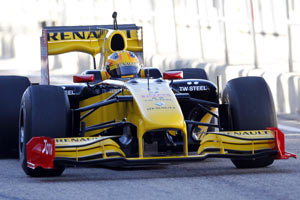Renault can't win races in 2010 after ending 8th in the previous season with a Crashgate, a demoralized team, an obsolete windtunnel and an empty CFD center...
The team needed to be restructured and that's what Renault did this season. This season is a transition season and the R30 is technically a transition car based on the R29. You should read Boullier's and Kubica's last interviews.
This amazing development rate of Renault this year shows, at least, three things...
-Renault is really aiming to be back on the top : the motivation is there
-Renault still knows how to develop a car and make it fast even with 'little' resources: the competences are there.
-Renault have the tools to make a fast car again. The windtunnel is finally reliable and the CFD operational and precise.
95% of evolutions worked immediately according to Boullier. And some of them have been copied by top teams.
This year's evolutions on the R30 were not only numerous but some of them were also original and ingenious (the FW, the Splitter, the F-duct, the diffuser...)
I made this modest analyse/bilan that shows why is the R30 a transistion car and why the R31 must very different:
The biggest differences between the R30 and it's predecessor are obviously the DDD and the way R30's radiators are placed...
R30/R29 (painted) sidepods:
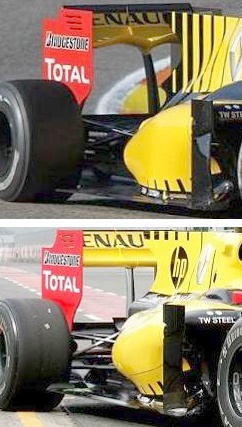
The R29 has, paradoxically, a more sculpted sidepods, they coat the radiators and the exhausts better at the bottom...
But if we take a look inside these two cars, we can understands why...
R30:
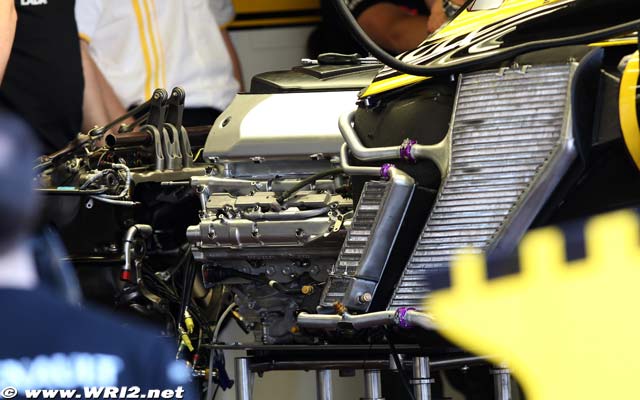
Renault's R30 fuel tank has been more widened than lengthened to accommodate more fuel in the R30, and the engine has been pulled back a little bit, which has created extra space in the sidepods. Two small radiators have taken place in each of these areas. They certainly belong to the Gbox. They are usually placed in the rear, above the Gbox but Renault moved them to the sidepods because Rear suspension's rockers, dampers and inerter etc. took place on the front of the Gbox (in order to free the space for the diffuser's supplementary channels); that means the rear suspensions took radiator's place.
A merc Gbox with its Radiator and suspension components:
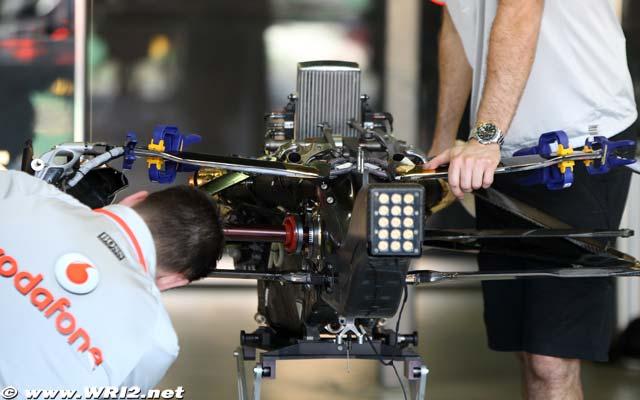
Renault Gbox:
http://scarbsf1.wordpress.com/2010/03/10/191/[/url]
with DDD's channels and the suspension's mechanism fully mounted:
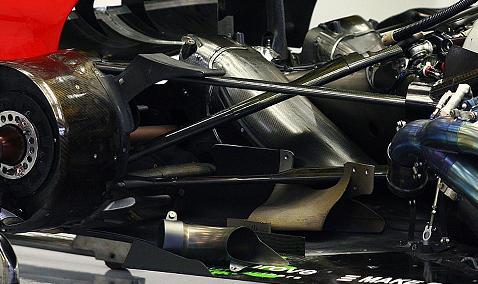
But that's not the only reason.... The spindles that attach the floor to the tube take more place between the secondary radiators and the exhausts in the R30. They are better integrated into the R29, but in the R30, they block the way for the sidepods, sacrificing valuable space on the floor...
(A comparison between the R30 and the 29)

The R29 (painted like the R30):
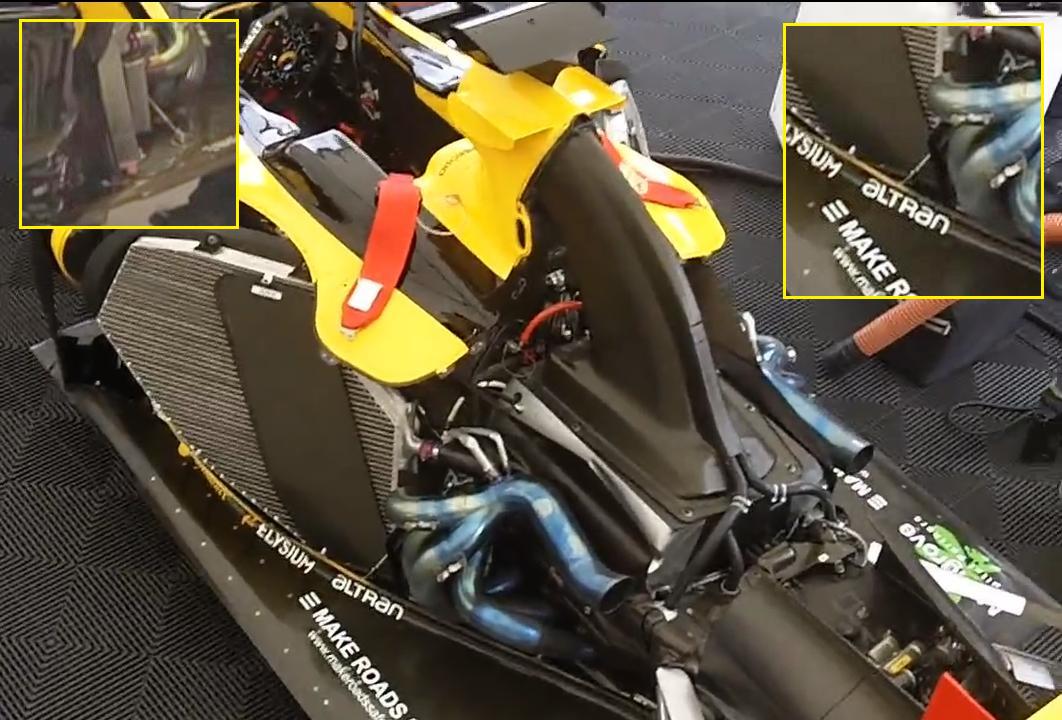
In 2011, as you know, the DDD and it's channels will be removed, the Gbox will be a complete new one with pull rods, according to some sources, and the oil radiators will take place in the back of the car, I think and the R31 will certainly get much tighter side pods and rear end :p , and that's very important...
Rear-end; a comparison between the R30 and the RB5:

and where DDD channels are located:
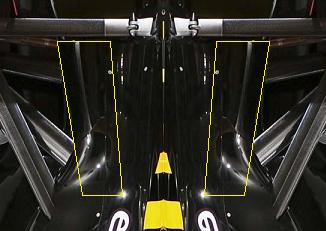
Only imagine... :p
Renault's 2010 season is certainly very satisfying, despite the fact that Renault is only 4th force and despite the fact that teams witch were close to Renault in 2009 (Ferrari and McLaren in the beginning), are 'far' ahead in 2010 ... why ? there are many reasons to that.
These teams have not faced the big problems that Renault faced in 2009. Renault was really tired and ill during 2009 and till the end. To stand up again, Renault had to restructure the house and make the 2010 car with the existing tools...
As Result, we have an R30 which resembles to the R29 ... more monstrous and aggressively developed.
The main reason for the limited progress of Renault in 2010 is clearly here; they took the R29 as a basis, kept a similar 'body' (in shape and dimensions) in order to avoid overspending and reworking the rigidity of the car, and at the same time keeping the weight as low as possible. Renault has therefore preferred to spare money and save time. This is what we see when we analyse the R30 and its organes closely.
The Double diffuser explains a lot too.
This year, we saw different aero philosophies. The F10 and RB6 have a totally opposite philosophy if compared to the R30. The McLaren is like a mix of both philosophies.
The the F10 and the R30 generate downforce differently. The F10, is rather conventional; it uses a long and spacious floor and very sculpted side pods at their bottom bottom and rear in order to exploit the air that passes over the floor as much as possible. This air passes over the floor and with the help of gurney flaps helps to extract the air passing underneath the car. Ferrari has deliberately stretched his car, but opted for a small diffuser with a relatively smooth angle of extraction. Like Red Bull.
The R30 is the extreme opposite.
Considering that Renault has done everything to keep its car short, the sidepods are obese (because of the 4 radiators and the widened -instead of stretched- fuel tank), and the floor short. And because of the two additional
channels of the diffuser, the rear end is fat and the floor not very spacefull. The R30 uses its diffuser very differently; that monster diffuser extracts the air flowing under the floor, using its two steep angled channels with a higher speed. That's why the Renault front wing is very complex; it aims to over-feed the ground effect and the monster diffuser, while the F10 has a simple 'FW'.
All I'm saying is that Renault had constraints, the team had to use a known basis, which is the R29, and that its design has strengths and weaknesses witch Renault knew from the beginning. We can also conclude that the three top teams have chosen a better solution, but to implement it, two of them started from a white sheet, have worked more and have spent more money...
the R31 will certainly have completely new design that is very similar to the F10 and RB5/RB6, not only because of the abolition of DDD but also thanks to the stability and the extra time and money available for the 2011 program.
My sources: interviews from Patrick Head and Willy Rampf, Scarb's articles and hundreds of photos on the R30, the R29 and their competitors :p
And it's my own opinion. All I said is not necessarily true


